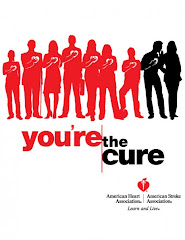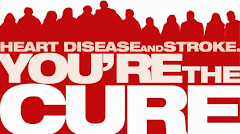A guest column from Illinois Advocacy Committee chair Kathy Grady ran in the State Journal-Register in Springfield over the weekend. Here it is:
Your opinion: Give FDA authority over tobacco
STATE JOURNAL-REGISTER
Posted May 31, 2008 @ 01:43 AM
Three years ago my father died after a long struggle with tobacco-related COPD (Chronic Obstructive Pulmonary Disease), so I can relate to the devastating effects tobacco use can have on individuals and their families. Additionally, through my role with the American Heart Association and extensive work with heart failure patients, I’ve witnessed the debilitating impact that tobacco can make on the body, resulting in cardiovascular disease, stroke and, unfortunately, death.
Even though tobacco use causes these and other devastating health effects, currently no government agency has oversight over the manufacturing and marketing of tobacco products. All other products such as food, drugs and even lipstick are regulated by the Food and Drug Administration (FDA), but no agency has oversight over tobacco products.
A lifetime of addiction nearly always starts in the teenage years; nearly 90 percent of adult smokers began smoking as teens, so any attempt to limit the national epidemic of tobacco addiction must begin with eliminating the marketing and manufacturing of these products to target children.
A new report released by leading public health organizations shows the extent to which tobacco manufacturers take advantage of the lack of regulation over its industry to entice new users. The report shows how the tobacco industry attracts children by adding candy flavorings like strawberry, banana and grape to their products. They also know that smoking is unpleasant for new smokers, so they carefully design the product to make it less harsh by adding sugars and chemicals that numb the throat. They even address how the cigarette should be designed so that the novice smoker can light it more easily.
Now, Congress has an historic opportunity to protect children and save lives. The Family Smoking Prevention and Tobacco Control Act (S 625/HR 1108) is bipartisan legislation that would give the FDA authority over tobacco products and their marketing. While these bills would help protect all Americans from the ravages of tobacco, it includes specific provisions to protect our children from this deadly addiction.
The FDA legislation would restrict tobacco advertising and promotions. It would ban outdoor advertising near schools, remove advertising with colorful pictures that appeal to children from stores and from magazines with high youth readership, and put larger, more effective warning labels on the cigarette packs themselves. The bill also specifically bans candy-flavored cigarettes that are used to lure our children into a lifetime of addiction.
The companies’ techniques to entice children have become increasingly sophisticated and effective. R.J. Reynolds, now Reynolds American, the same company that once marketed cigarettes to kids with Joe Camel, a cartoon character, launched a series of flavored cigarettes, including a pineapple- and coconut-flavored cigarette called “Kauai Kolada” and a citrus-flavored cigarette called “Twista Lime.”
The tobacco companies aggressively market to kids and have been extraordinarily successful. Just three heavily advertised brands — Marlboro, Camel and Newport — are the top choices of more than 80 percent of kids who smoke. Marlboro, the most heavily advertised brand, constitutes almost 50 percent of the youth market but only about 40 percent of smokers over age 25.
According to the Federal Trade Commission, the tobacco companies spend more than $13.4 billion a year to market their products in this country. That’s $36 million a day; much of their marketing is directed at kids. In fact, a recent survey released by the Campaign for Tobacco-Free Kids found that teens are almost twice as likely as adults to remember tobacco advertising — 49 percent of teens and 26 percent of adults said they had seen advertising for cigarettes or spit tobacco in the last two weeks.
Moreover, tobacco industry documents, research on the effect of the cigarette companies’ marketing efforts on kids, and the opinions of advertising experts combine to reveal the intent and the success of the industry’s efforts to attract new smokers from the ranks of children.
A Senate majority of 57 senators are sponsoring this legislation, as are 218 members of the House. I applaud Sens. Dick Durbin and Barack Obama for being co-sponsors of the bill. I urge the rest of the Illinois delegation to support this life-saving legislation. With their help, Congress can take a major step to protect our families and save lives.
Kathleen Grady, Ph.D., is the administrative director of the Bluhm Cardiovascular Institute of Northwestern Memorial Hospital’s Center for Heart Failure and associate professor in the Feinberg School of Medicine at Northwestern University. She is chair of the Illinois Advocacy Committee for the American Heart Association and lives in Arlington Heights.
Monday, June 2, 2008
Subscribe to:
Posts (Atom)








